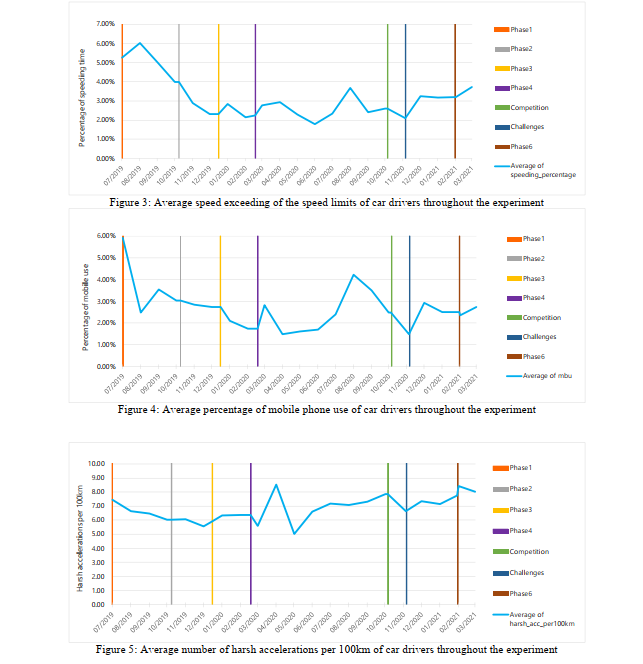
Background: Advances in smartphone technology are rapid, constantly evolving and revealing new possibilities for data collection, interconnection and analysis in road safety. Furthermore, it is becoming easier to provide direct feedback and trip analysis to drivers about their driving performance regarding road safety, features which are capable of reducing road crash numbers and the corresponding casualties. Aim: In view of these developments, the objective of the current research is to exploit large-scale trip data from smartphone sensors in order to identify the impacts of driver feedback on various key performance indicators, namely speeding, harsh braking and harsh acceleration events. Methodology: Within the framework of BeSmart Project, a multimodal 200-driver ongoing naturalistic experiment was set to be conducted, consisting of 6 different phases differing in the type of feedback provided to drivers. These phases were defined as follows: Phase 1, where initially only the trip list and characterization were accessible to the application user. Phase 2, where a Scorecard was introduced enabling scoring per trip. Phase 3, where a Maps and Highlights were introduced providing further information per trip. Phase 4, where Comparisons between drivers were enabled and added. Phase 5, where Competitions were conducted with prizes for safe driving. Phase 6, where the application reverted to Phase 1 and all additional feedback was removed from the drivers. The differences in driver performance are going to be evaluated with descriptive and analytic means. Results: The Covid-19 pandemic swept throughout the globe in an unprecedented surge as the experiment was underway, and the number of participants and corresponding trips was unexpectedly reduced. Furthermore, a critical mass of 65 drivers retained a high enough number of trips (≥40) that was sufficient for more robust statistical analysis. The identified trends were as follows: (i) There is an overall improvement of driving behavior from Phase 1 to Phase 2. (ii) The Covid-19 pandemic and the subsequent lockdown measures greatly reduced trips. (iii) There is a platooning in driver behavior in subsequent phases. (iv) There is an improvement of driving behavior during the Competition phase. (v) There is a relapse towards worse driving behavior as soon as the Competitions phase is completed. Conclusions: From the execution of the BeSmart experiment, it becomes evident that driving behavior can be evaluated and communicated to drivers. The influence of feedback appears to fluctuate and platoon across the various experimental phases, though it appears that there are some relapse effects for drivers towards the end of the experiment.
| ID | pc446 |
| Presentation | |
| Full Text | |
| Tags |













